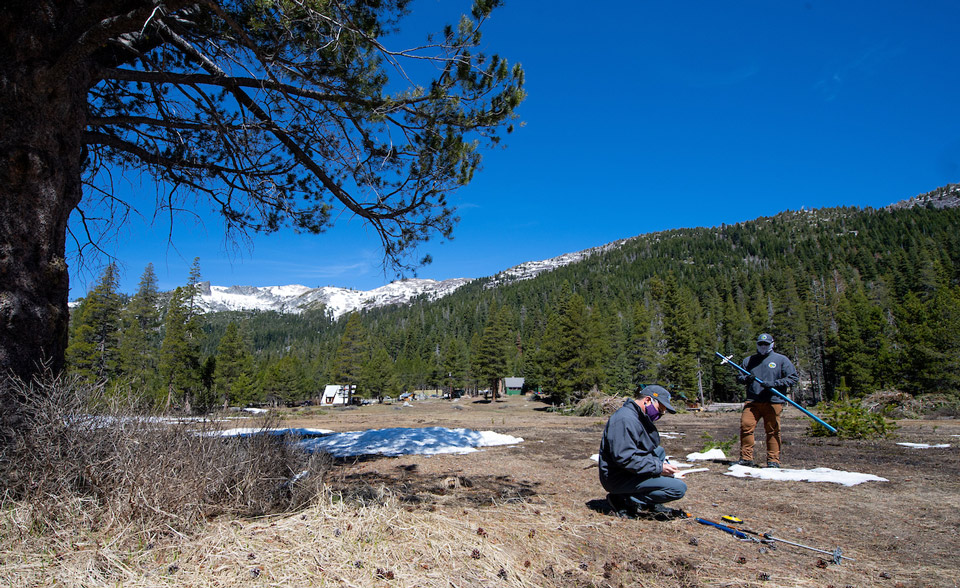
(Left) Sean de Guzman, chief of California Department of Water Resources (DWR), Snow Surveys and Water Supply Forecasting Section, and Andy Reising, water resource engineer, DWR Snow Survey Section and Water Supply Forecast Section, conducts the final snow survey of the 2020 season at Phillips Station. Credit: DWR
October 4, 2020 - SACRAMENTO, Calif. – California’s Water Year 2020 has come to a close and while Northern California was mostly dry, parts of Southern California experienced above average precipitation. The water year ended below
average and further demonstrated the impact of climate change on the state’s water supply.
“California is experiencing the impacts of climate change with devastating wildfires, record temperatures, variability in precipitation, and a smaller snowpack,” said DWR Director Karla Nemeth. “We must continue to invest in our infrastructure to prepare the state to cope with more extreme weather for the state’s needs today and in the future.”
For Water Year 2020, a lack of precipitation resulted in a snowpack of just 50 percent of average on April 1, as measured by the California Cooperative Snow Survey Program, making it the 10th smallest snowpack in California since 1950. California’s reservoirs received just a third of the water runoff from precipitation and snowmelt that they did during the same time period a year ago.
The impacts of dry conditions were tempered, however, because of good reservoir storage from a wet 2019. Statewide reservoir storage through the end of September 2020 is projected to be 93 percent of average or 21.5 million-acre feet.
DWR’s annual water year recap, “Water Year 2020: Summary Information” highlights additional key details of the water year which runs from October 1 to September 30.
Focused on tangible actions to help build a climate-resilient water system, the state recently finalized the California Water Resilience Portfolio outlining almost 150 actions to better prepare our state for long-term water resilience. The continued water year variability is also a reminder to all Californians that we need to be prepared for dry periods. For more information visit: California’s Most Significant Droughts: Comparing Historical and Recent Conditions.
Source: CA.DWR








